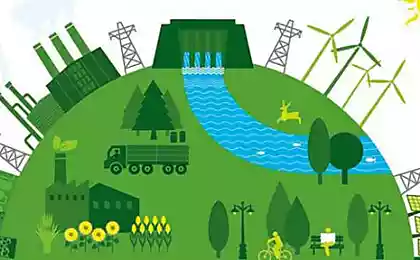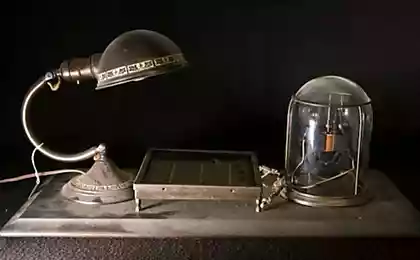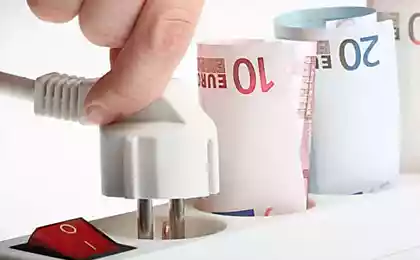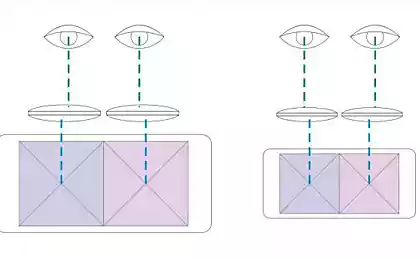275
Secrets of the refrigeration thermostat: how to avoid icing and space bills for electricity

A simple rule: If a lot of ice forms in your refrigerator or the drain chamber is overflowing, then the compressor mode is installed incorrectly. This is the first sign that the settings require adjustment.
The problem of incorrect refrigerator setting affects millions of households around the world. According to statistics, about 23% of the electricity consumed in the average house is the refrigerator. At the same time, most owners do not even suspect that their understanding of the principle of the regulator is fundamentally wrong, and the consequences are not only unnecessary electricity costs, but also the premature failure of expensive equipment.
A fundamental misconception: Many people believe that the rotary wheel in the refrigerator directly regulates the temperature. In fact, it controls the duration of the compressor, the heart of the entire refrigeration system.
What do the numbers on the regulator really mean?
Thermostat in most refrigerator models has a scale from 1 to 7 (in some models up to 5 or up to 9). Contrary to popular belief, these figures do not correspond to specific temperatures in degrees Celsius or Fahrenheit. They determine the sensitivity of the thermostat and, as a result, the duration of the compressor.
- Lower value (1-2)The compressor works less and less time
- Greater meaning (6-7)The compressor works more often and longer
Why does ice form and how does it relate to settings?

The formation of ice in the refrigerator is the result of two main factors:
- Condensation When warm, moist air comes into contact with cold surfaces
- Too low a temperature. evaporator caused by excessively long operation of the compressor
The golden rule of tuning
The optimum temperature for storing most products in the refrigerator is +2°C. . . +6°C. To achieve this range in most household models, it is enough to set the regulator at a value of 3-4.
Seasonal table settings: the key to saving and extending the service life
One of the most neglected aspects of operating a refrigerator is the need to adjust settings depending on the time of year and ambient temperature. Research shows that seasonal adjustment can reduce refrigerator energy consumption by 15-25%.
Winter
Recommended setting: 2-3
For refrigerators in unheated rooms, position 1-2 is enough, since the ambient temperature is already quite low.
spring
Recommended setting: 3-4
During a period of sharp warming, it is recommended to move to position 4 to maintain a stable temperature.
Summer.
Recommended setting: 4-5
Extreme heat (more than 30°C) may require an increase to 5-6, but watch out for the risk of icing.
autumn
Recommended setting: 3-4
With the onset of cooling, gradually return to the value of 3 for optimal operation of the compressor.
It is important to understand that these recommendations are averaged, and ideal settings can vary depending on the model of the refrigerator, its age and the characteristics of operation.
Critical signs of improper setting
Your refrigerator will scream for help if you see the following signs:
- Formation of ice crust more than 5 mm thick on the back wall
- The compressor works almost without stopping.
- Products in the lower compartments freeze
- A sharp jump in electricity bills
- Condensation formation on external walls (for single-compressor models)
Experimental method of determining the ideal setting
Instead of blindly following the general recommendations, it is possible to determine the optimal position of the regulator by experimental means:
- Place the household thermometer in the central part of the refrigeration chamber
- Set the regulator to an average (e.g. 3)
- After 24 hours, check the thermometer readings.
- If the temperature is above +6°C, increase the value on the regulator by 1 point.
- If the temperature is below +2°C, reduce the value of the regulator by 1 point.
- Repeat this process until you reach an optimal range of +2°C. . . +6°C

Professional lifehack
If you have a two-chamber refrigerator with a single compressor, you can use a simple trick to maintain the optimal temperature ratio in the refrigerator and freezer. Place a glass of water in the refrigerator and periodically check its condition: the water should remain liquid, but cool (about +4 ° C). At the same time, place a plastic container with water in the freezer - it should freeze, but not too quickly (ideally - in 3-4 hours).
The economic effect of correct adjustment
Energy efficiency studies show that switching from incorrect settings (level 6-7) to optimal settings (level 3-4) can reduce power consumption by 30-40%. In absolute terms, this means saving:
- 120-180 kWh per month for a standard two-chamber refrigerator
- 1440-2160 kWh per year
- In monetary terms: 5000-12000 rubles of annual savings (depending on regional tariffs)
Conclusion
Getting the refrigerator regulator right isn’t just a way to avoid ice formation or lower your electricity bills. This is a comprehensive approach to wisely using resources and extending the life of one of the most important appliances in our lives.
Following the recommendations given in the article and regularly adjusting the settings in accordance with seasonal changes, you will not only reduce energy costs, but also improve the safety of products, reduce the frequency of defrosting and extend the life of the refrigerator.
Remember, a small regulator wheel is not just a part, but the key to effectively managing one of the most energy-consuming appliances in your home.
Glossary of terms
compressor
The main working element of the refrigerator, which creates the necessary pressure for the circulation of the refrigerant. The duration of its operation depends on the temperature in the chambers and the energy consumption of the device.
Evaporator
An element of the refrigeration system, where heat is absorbed from the internal space of the refrigerator due to the evaporation of the refrigerant. It is usually located on the back of the refrigerator.
Thermostat (thermostat)
A control device that turns the compressor on and off depending on the temperature inside the refrigerator. It is controlled by a rotary wheel with a numerical scale.
Refrigerant
A special liquid in a closed refrigerator system, which absorbs heat when evaporating, and gives it away when condensing. Modern refrigerators use environmentally friendly refrigerants.
Condensation
The process of transition of a substance from a gaseous state to a liquid state. In the context of a refrigerator, the formation of water droplets on cold surfaces from moisture contained in the air.
Ice icing
The process of forming an ice crust on the evaporator or back wall of the refrigerator due to the freezing of condensate. It prevents normal heat exchange and reduces efficiency.
Energy efficiency
An indicator that characterizes the ratio of the beneficial effect of energy use to the cost of energy to obtain this effect. In the context of a refrigerator, the ratio of cooling provided to electricity consumed.
Revealing Questions: Simple Words for Deep Understanding
Modern solutions for exchange and investment in cryptocurrency























